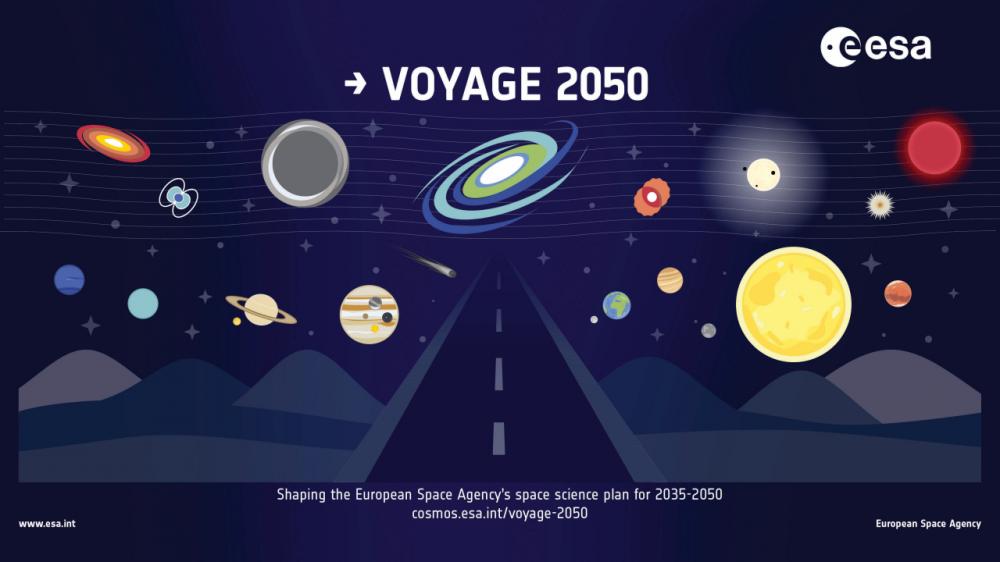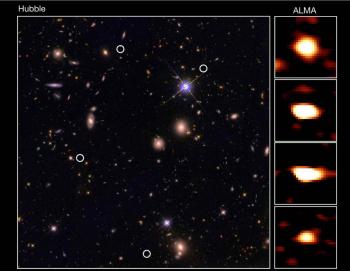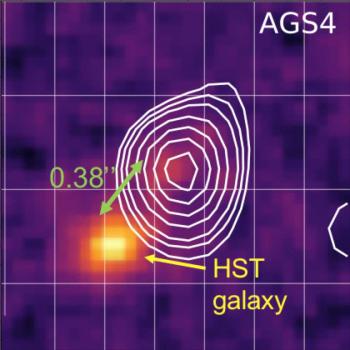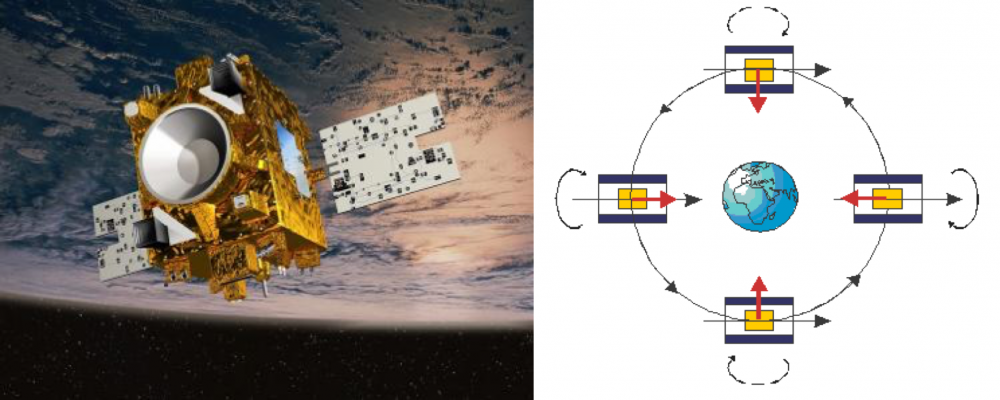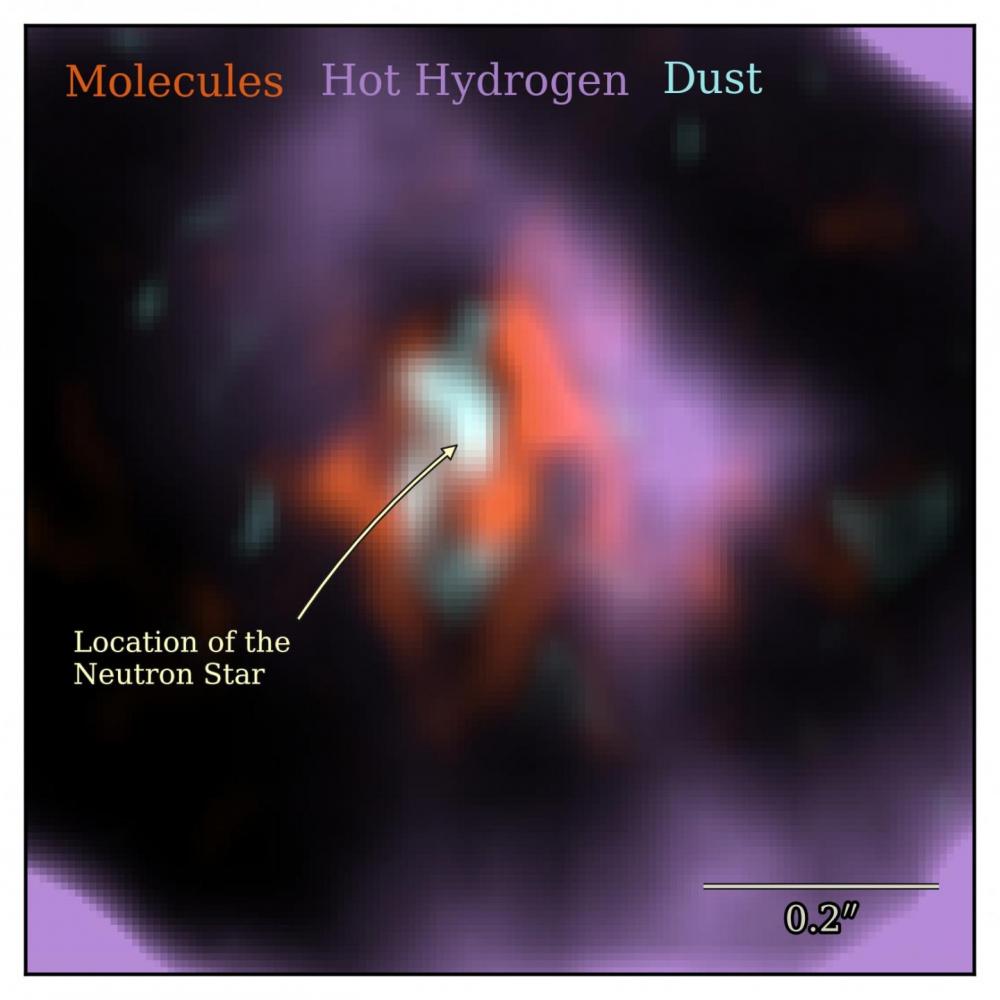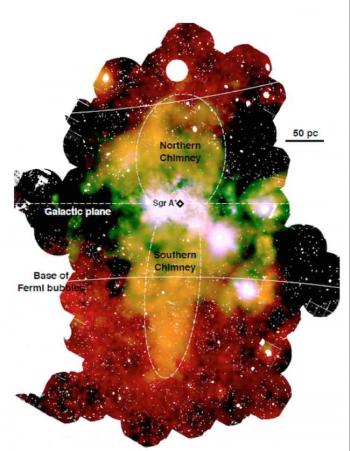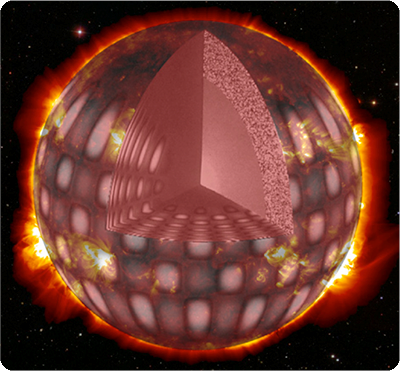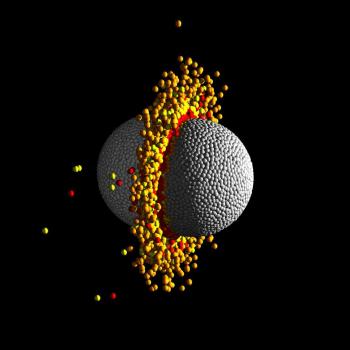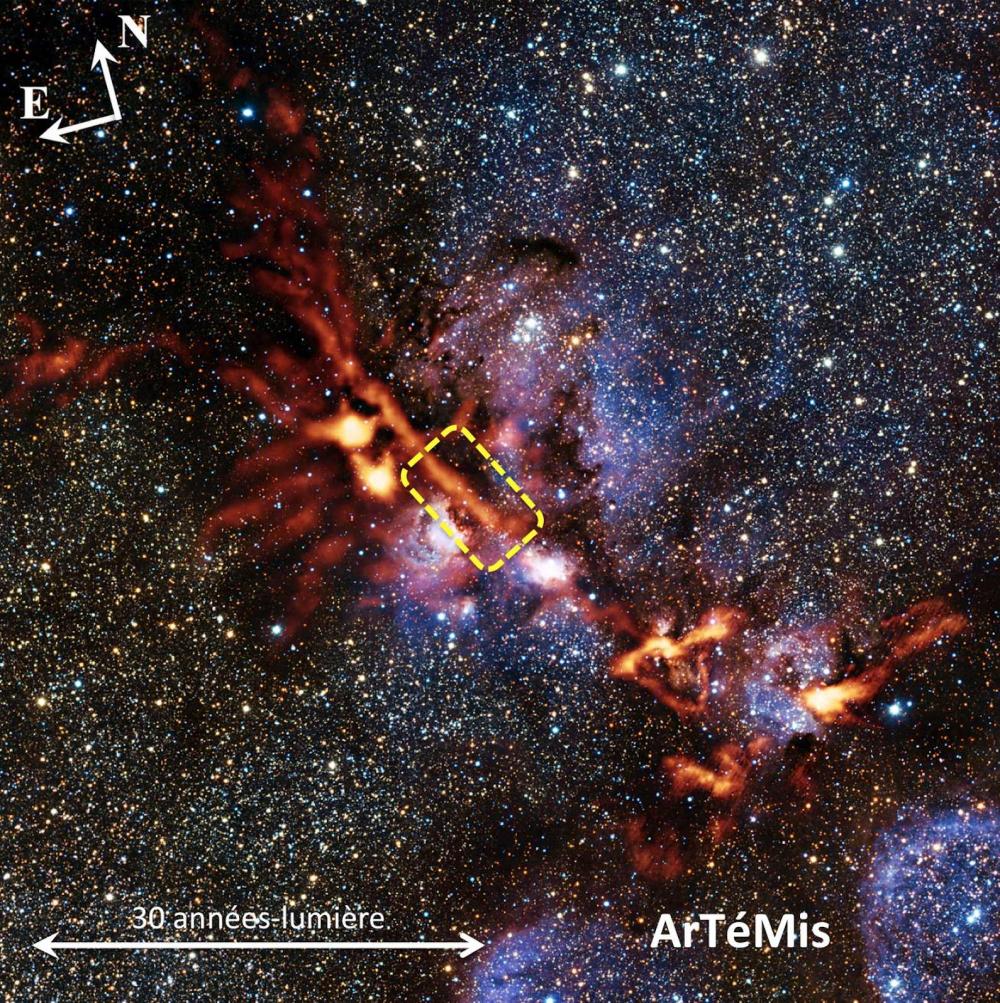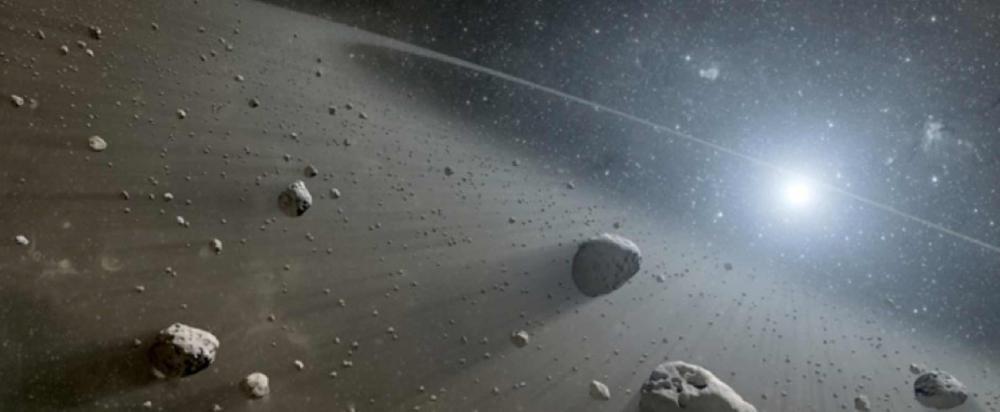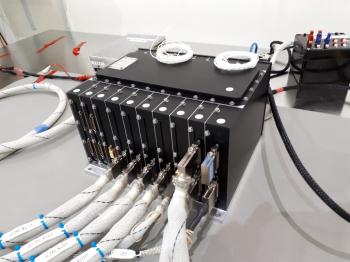Highlights 2019
After the Horizon 2000 programme started in 1983, followed by its extension Horizon 2000 Plus, the European Space Agency (ESA) is committed until 2035 into the Cosmic Vision programme that includes the launches of Athena (2031) and LISA (2034). To plan its scientific priorities beyond this date, ESA has solicited the community through a call for ideas/projects. This consultation, presented at a conference in Madrid late October 2019, resulted into the publication of nearly 100 White Papers, covering fields as distinct as fundamental physics, exploration of the solar system or the study of the distant universe. The evaluation process will culminate in 2020 with a series of recommendations addressed to the ESA's scientific directorate. Scientists from the Astrophysics Department/AIM Labporatory and collaborators have answered positively to this call by proposing several projects, some of which described below.
The programme of the Madrid workshop, the various presentations and the access to all the White Papers submitted by the scientific community are available on the ESA website “Voyage 2050”.
It should be noted that ESA has also invited the general public to participate to this adventure and to share his views for this next ESA space programme.
A study conducted by astrophysicists of the Department of Astrophysics-AIM Laboratory of CEA-Irfu has revealed a large number of galaxies as massive as the Milky Way in the distant universe, thanks to the large interferometer ALMA (Atacama Large Millimeter/submillimeter Array) in Chile. These galaxies have hitherto remained invisible due to the attenuation of their brightness by interstellar dust. They are 10 to 100 times more numerous than all those detected so far, at distances where the universe was only two billion years old. This great abundance of massive galaxies in the young universe is in contradiction with current theoretical models of galaxy formation and represents a new challenge for our understanding of the early ages of the universe. These results are published in the journal Nature on August 7, 2019.
An international team, led by researchers from the Department of Astrophysics/AIM Laboratory of CEA-Irfu has just highlighted a new population of very remote galaxies, which had so far escaped the deepest observations of the Universe. During the summer of 2016, at more than 5000 meters of altitude on the Chilean highlands, the antennas of the large interferometer ALMA (Atacama Large Millimeter/submillimeter Array) scrutinized for more than 20 hours one of the best studied regions of the sky. These observations revealed galaxies still unknown, very massive but opaque, emitting only a very small amont of visible light due to a large quantity of dust. These "dark" galaxies, very far away, which could be the progenitors of the most massive galaxies in the universe, reveal that the importance of star formation, during the first billion years of cosmic history, could have been largely underestimated so far. These results have just been published in the journal Astronomy & Astrophysics.
Testing the equivalence principle, a fundamental principle of the general relativity developed by Albert Einstein from which the universality of free fall derives, that is the challenge undertaken by the Microscope spacecraft. The Microscope space mission, founded and operated by the CNES, The Microscope space mission, founded and operated by the CNES, designed by ONERA in collaboration with Observatoire de la Cote d’Azur, CNES and ZARM (Bremen, Germany), was launched on April 25, 2016 with a single scientific instrument on board: the T-sage instrument developed by ONERA. In a study published in the journal Classical and Quantum Gravity, the Microscope team in which a researcher of the Département d’Electronique des Détecteurs et d’Informatique pour la Physique/Laboratoire AIM of the CEA-Irfu Paris-Saclay is participating, verified the validity of the equivalence principle with unprecedented precision. By taking into account carefully the noise sources, benefiting from a good knowledge of the instrument and using innovative tools such as those used in astrophysics, the team has been able to improve by a factor of 10 the previous measurement, making the previously published results more robust and consolidating the validity of the Equivalence principle.
After the Horizon 2000 programme started in 1983, followed by its extension Horizon 2000 Plus, the European Space Agency (ESA) is committed until 2035 into the Cosmic Vision programme that includes the launches of Athena (2031) and LISA (2034). To plan its scientific priorities beyond this date, ESA has solicited the community through a call for ideas/projects. This consultation, presented at a conference in Madrid late October 2019, resulted into the publication of nearly 100 White Papers, covering fields as distinct as fundamental physics, exploration of the solar system or the study of the distant universe. The evaluation process will culminate in 2020 with a series of recommendations addressed to the ESA's scientific directorate. Scientists from the Astrophysics Department/AIM Labporatory and collaborators have answered positively to this call by proposing several projects, some of which described below.
The programme of the Madrid workshop, the various presentations and the access to all the White Papers submitted by the scientific community are available on the ESA website “Voyage 2050”.
It should be noted that ESA has also invited the general public to participate to this adventure and to share his views for this next ESA space programme.
An international team, led by astronomers from Cardiff University, with the contribution of the Astrophysics Department of CEA-Irfu, may have spotted for the first time the compact remains of the last star explosion visible by eye that occurred on February 23, 1987 in a nearby galaxy, the Large Magellanic Cloud, only 160 000 light-years away.
Using the high-resolution images of the ALMA radio telescope in the Atacama Desert in northern Chile, the team discovered a small area of dust, warmer than its environment, which may correspond to the supposed location of the compact neutron star that should have formed during the explosion according to theoretical models. This compact object had been searched without success for more than 30 years. This indirect discovery nevertheless requires to be confirmed by additional data. These results are published in The Astrophysical Journal.
The first results of the space mission SVOM (for Space-based multi-band astronomical Variable Objects Monitor) have just fallen before the launch scheduled for the end of 2021. How is this possible? Quite simply because this ambitious Franco-Chinese mission, which aims at studying gamma-ray bursts of the Universe, is also developing a network of ground-based cameras able to detect the emission of visible light that follows the outbreak of these bursts, the most violent known explosions. This network, dubbed Ground-based Wide Angle Camera (GWAC), is already in operation at the Xinglong Observatory in Northeast Beijing (China). Its test version, dubbed Mini-GWAC, successfully concluded a first campaign of monitoring and real-time follow-up of gravitational wave sources discovered by the LIGO (USA) and Virgo (Italy) facilities. These results are being published in the journal Research in Astronomy and Astrophysics.
Thanks to the X-ray satellites Chandra and XMM-Newton, an international team including the Department of Astrophysics of CEA-Irfu has just discovered the existence of two bubbles of hot gas escaping to distances of about 500 light-years, on both sides of the massive black hole environment, in the center of our galaxy. Like the messages of Native Americans transmitted by smoke bubbles visible from afar, these "hot gas chimneys" tell us today about the intense past activity of the black hole and the central regions of our Galaxy. These results are published in the journal Nature of March 21, 2019.
After the Horizon 2000 programme started in 1983, followed by its extension Horizon 2000 Plus, the European Space Agency (ESA) is committed until 2035 into the Cosmic Vision programme that includes the launches of Athena (2031) and LISA (2034). To plan its scientific priorities beyond this date, ESA has solicited the community through a call for ideas/projects. This consultation, presented at a conference in Madrid late October 2019, resulted into the publication of nearly 100 White Papers, covering fields as distinct as fundamental physics, exploration of the solar system or the study of the distant universe. The evaluation process will culminate in 2020 with a series of recommendations addressed to the ESA's scientific directorate. Scientists from the Astrophysics Department/AIM Labporatory and collaborators have answered positively to this call by proposing several projects, some of which described below.
The programme of the Madrid workshop, the various presentations and the access to all the White Papers submitted by the scientific community are available on the ESA website “Voyage 2050”.
It should be noted that ESA has also invited the general public to participate to this adventure and to share his views for this next ESA space programme.
Lisa Bugnet is one of 35 young women researchers who won the L'Oréal-Unesco Fellowships for Women in Science in 2019. As an asteroseismologist at the Dynamic Laboratory of Stars, (Exo)planets and their Environment of the DAP/Irfu, she uses seismic waves emitted by stars to probe their heart and understand their evolution from birth to the end of their life.
An international collaboration, involving the Astrophysics Department-Laboratory AIM of CEA irfu, participated in the study of an exoplanetary system, Kepler-107 and revealed an amazing distribution of its 4 planets of which two seem potentially resulting from a giant impact. Thanks to asteroseismology (the study of star vibrations) and the modeling of planetary transits, researchers have been able to determine the mass and radius of the central star and its planets with great precision. and highlighted the unusual density of one of the planets. This anomaly can be explained by a giant collision between planets, probably similar to the one that affected the Earth in the past to form the Moon. These results are published in the journal Nature Astronomy of Februrary 4th, 2019.
An international team led by the Astrophysics Department-AIM Laboratory of CEA-Irfu has just obtained new clues about the origin of star mass distribution, combining observational data from the large interferometer ALMA and the APEX radio telescope operated by the European Austral Observatory (ESO) and the Herschel Space Observatory. Thanks to ALMA, the researchers have discovered in the so-called Cat's Paw Nebula, located at about 5,500 light-years, the presence of protostellar dense cores much more massive than those observed in the solar vicinity. Researchers have shown that there is a close link between the mass distribution of interstellar filaments and the mass distribution of stars. The density - or mass per unit length - of the parent filaments is the crucial parameter that controls the masses of newly-formed stars. This discovery provides a key clue to the origin of stellar masses. These results are published in three articles of the journal Astronomy & Astrophysics.
An international team led by researchers from the CEA Paris-Saclay Astrophysics Department (DAp) have probed for the first time the dust envelopes surrounding stars in formation (so-called Class 0 protostars) thanks to the large interferometer NOEMA (former Plateau de Bure, France). Surpisingly, the researchers discovered the presence of large grains whose size grows as one gets closer to the central star. The presence of such large grains, already forms a few 10000 years after the beginning of the initial gas collapse is extremely unexpected. These grains are the building blocks from which planets will be formed. These results could thus call for a major revision of the timeline and timescales to form planets. These conclusions are published in Astronomy & Astrophysics.
On November 29, 2018, the first version of the ECU software for the ECLAIRs instrument was delivered.
This computer, called Gamma Camera Management and Scientific Processing Unit, will be set on the Franco-Chinese SVOM satellite, designed to study gamma-ray bursts. It will allow the management of the ECLAIRs instrument and the detection of gamma-ray bursts by the SVOM mission in real time on board. This software, under the scientific responsibility of the DAp, is produced in strong collaboration between the DAp and the DEDIP within the IRFU.
